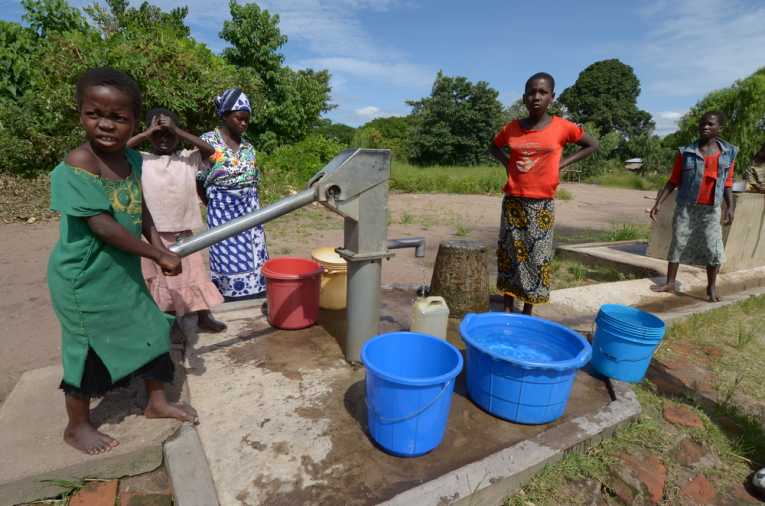As water use increases throughout the world, Africa could be said to be lagging behind in supply. 300 million poor and vulnerable people are without safe drinking water there and only 5% of the continent is irrigated. Global warming has dealt a savage hand to the Sahel and much of the rest of Africa.
The authors of a new study in IOP Science Environmental Research Letters argue that groundwater has to be crucial for Africa's future water supplies. Uneven distribution is the big problem with low yield bore-holes the rule for much of the south. In North Africa, huge resources in the form of sedimentary aquifers reside in Libya, Algeria, Sudan and Egypt.
So these 0.66 million km3 of underground stores may compensate somewhat for the dry future Africa certainly faces. But how do the richer geologies of the north compensate for the dearth of liquid gold in Central Africa?

Groundwater storage for Africa based on the effective porosity and saturated aquifer thickness. Panel (a) shows a map of groundwater storage expressed as water depth in millimetres with modern annual recharge for comparison. Panel (b) shows the volume of groundwater storage for each country; the error bars are calculated by recalculating storage using the full ranges of effective porosity and thickness for each aquifer, rather than the best estimate. Annual renewable freshwater availability, (calculated by the FAO in 2005) generally used in water scarcity assessments is shown for comparison; Credit: IOP Science/Environmental Research Letters
Water quality is not considered unfortunately because little data is available. Fluoride, arsenic, iron, manganese and chloride comprise some of the least palatable contaminations, but cities around Africa lack sanitation and adequate sewerage treatment, leading to widespread evidence of large faecal coliform bacteria and nitrate contaminations.
Nevertheless, this magnificent mineral endowment of water is still the largest source available for all the development that has to be made. There is 20X the water available in African lakes and 100X the annual renewable freshwater. The investment in food production for growing populations relies on this amount of water for irrigation as well as for the use of the people themselves.

Aquifer productivity for Africa showing the likely interquartile range for boreholes drilled and sited using appropriate techniques and expertise; Credit: British Geological Survey
These maps reveal an answer to the problems surrounding agricultural answers to the food shortages endemic to many African countries. Boreholes are being dug, but in appropriate cases, the effort can be planned to supply all the needs of a sizeable region. Some boreholes in lucky areas can supply more than 5 litres per second, increasing the productivity beyond that normally possible. Unfortunately, the limit for small boreholes is a depth of 50m (and some groundwater lies at 100m).
Careful further mapping, exploration of geologies and subsequent constrained development is essential to take advantage of the natural resource of water. Handpumps with a yield of only 0.1 to 0.3 litres per second will be the universal answer for many, but so desperate are those droughts and famines we have seen, the answers to national needs have to be universally discussed and planned.










